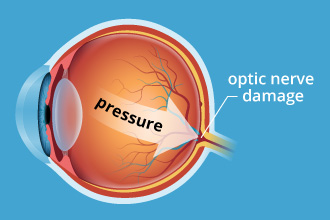GLE is a MIGS Device Supplier
Do You See the Problem?
Over 3 million people in the United States and 60 million globally would be on the path to blindness if it were not for recent medical advances. Glaucoma is an ocular disease that causes a loss of vision through damage to the optic nerve. One way to prevent the further loss of vision is through a micro-invasive glaucoma surgery (MIGS) device. We are proud that GLE is a MIGS device supplier.

Once the vision is lost it cannot be regained, although a doctor can take steps to preserve the vision of a patient after diagnosis. Thankfully, diagnosing glaucoma is not difficult. An optometrist can administer a pressure test and dilate a patient’s pupils to view the optic nerve. However, recognizing the symptoms can be tricky. Often, 40% of vision is lost before a person notices they are losing vision, and experts estimate that half of the people diagnosed with glaucoma are not aware that they have it[1].

Types of Glaucoma
There are multiple forms of glaucoma, but two are the most common – primary open-angle glaucoma (POAG) and angle-closure glaucoma. An increase in intraocular pressure (IOP) causes both of these types of glaucoma. POAG is more common and has, therefore, garnered the most focus on treatment and support. It often advances to a late-stage before the patient notices, while angle-closure glaucoma manifests in an “attack”. These attacks are often characterized by severe pain in the optical area, redness, decreased/blurry vision, halos, headache, nausea, and/or vomiting. As you may guess, angle-closure glaucoma is caused by the draining angle being closed[2].

Treatment
There are several methods for treating glaucoma. A doctor may prescribe eye drops or oral medication designed to lower pressure by decreasing fluid production or helping with fluid drainage. Surgery can also increase fluid drainage. Laser surgery for POAG involves the surgeon using a laser to improve the flow through the already-open drainage angle, while surgery for closed-angle glaucoma will create a hole in the iris for fluid to flow to the drainage angle.

An ophthalmologist may also opt for surgery to create a new drainage channel in the eye. Another surgery option is trabeculectomy. This surgery creates a pocket for fluid to drain into, from which the tissue surrounding the patient’s eye absorbs it. The last option is a drainage device, which is the current focus of most medical advances in glaucoma. These drainage devices are often called minimally invasive glaucoma surgery (MIGS) devices and are among the smallest medical implants in the world[2].
GLE is a MIGS Device Supplier
For a patient with POAG, a little help may be all that their eye needs to reduce IOP and prevent the advancement of glaucoma. To this end, some doctors prescribe eye drops or oral medication. Even with drops, one of the most effective ways to reduce IOP is through a MIGS device. These devices work by creating a pathway through the trabecular meshwork into Schlemm’s Canal to allow for drainage (see above). For patient comfort, these devices are as small as possible – some are about the size of an eyelash, and others are almost too small to see!

How GLE Fits
Recently, the team at GLE Precision has been focusing on displaying our core capabilities. We hired a cinematography company to create some videos that showcase our talents, have written blogs on the subject, and displayed some of the parts on our blog/social media. One of our capabilities is small parts, which lends itself well to the MIGS industry. For example, below is a picture of our machinist Scott holding a tool we recently made for a MIGS device supplier. The tooling is only the small tip of the shaft!

Tight tolerances are also a large part of the medical implant industry. The tolerance of a distance dimension on the above part was originally +/-.000020”. We thought we could hit that target, but we could not accurately measure that tolerance, or find anybody that could! The customer for these parts has recently been using us as a source for a lot of their R&D work and it is always exciting to see what technology we will help them pioneer next.
How Can We Help?
Don’t hesitate to reach out to us at GLE Precision if you are in the glaucoma or larger medical industry, or part of any other company that could use our gaging expertise for R&D, tooling, gaging, or production parts.
[1] https://www.glaucoma.org/news/glaucoma-awareness-month.php
[2] https://www.mayoclinic.org/diseases-conditions/glaucoma/symptoms-causes/syc-20372839

